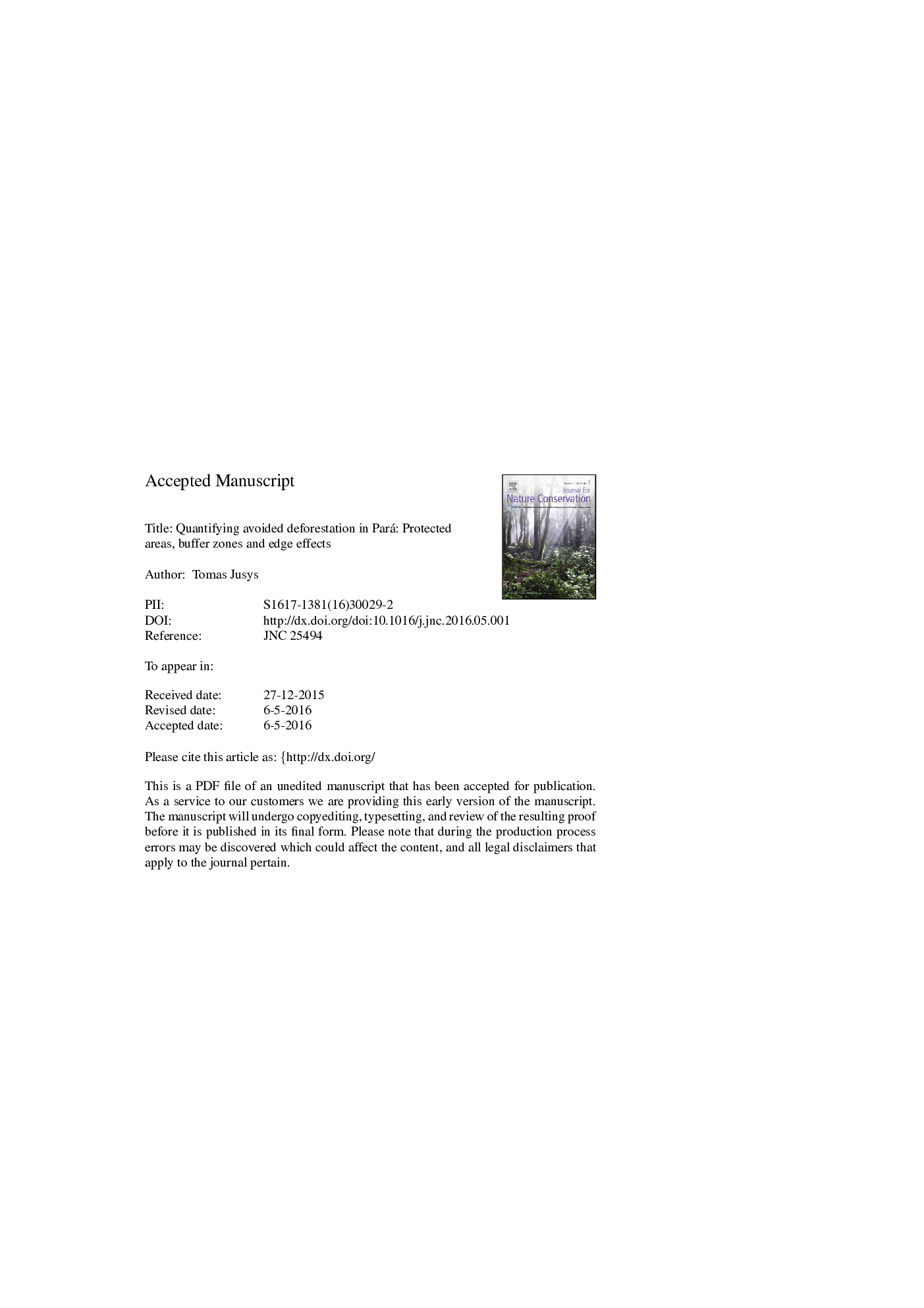| Article ID | Journal | Published Year | Pages | File Type |
|---|---|---|---|---|
| 6305419 | Journal for Nature Conservation | 2016 | 23 Pages |
Abstract
Percentage of forests saved due to establishment of protected areas is an important piece of information for government institutions and, therefore, is the goal of this study. However, non random location selection bias makes such information directly unobservable. To overcome this problem, propensity score matching was applied. Unlike in previous studies, impact of buffer zone management was assessed by estimating avoided deforestation in buffer zones and park edges. The study area is the state of Pará. Overall results revealed that park protection saved 0.72% of protected surface from deforestation during 2000-2004Â year period (â¼2900Â km2 of forests). The highest percentage of avoided deforestation was recorded in protected areas, situated near deforestation hotspots: central part of Eastern Pará, alongside Trans-Amazonian highway and on the banks of Amazon River. The findings also suggest that buffer zones tend to reduce deforestation where pressure on forests is lower, but substitution effect takes over in areas of high deforestation pressure (since loggers are prevented from deforesting within conservation units, deforestation in surrounding areas increases). Finally, the study does not find evidence of edge effects in the state of Pará.
Related Topics
Physical Sciences and Engineering
Earth and Planetary Sciences
Earth and Planetary Sciences (General)
Authors
Tomas Jusys,
